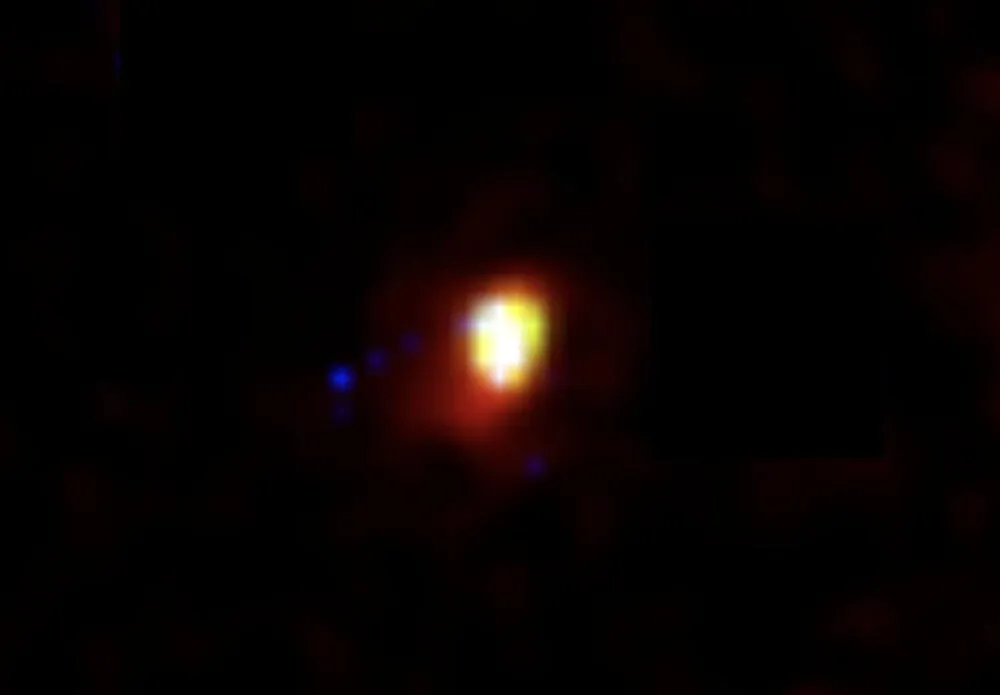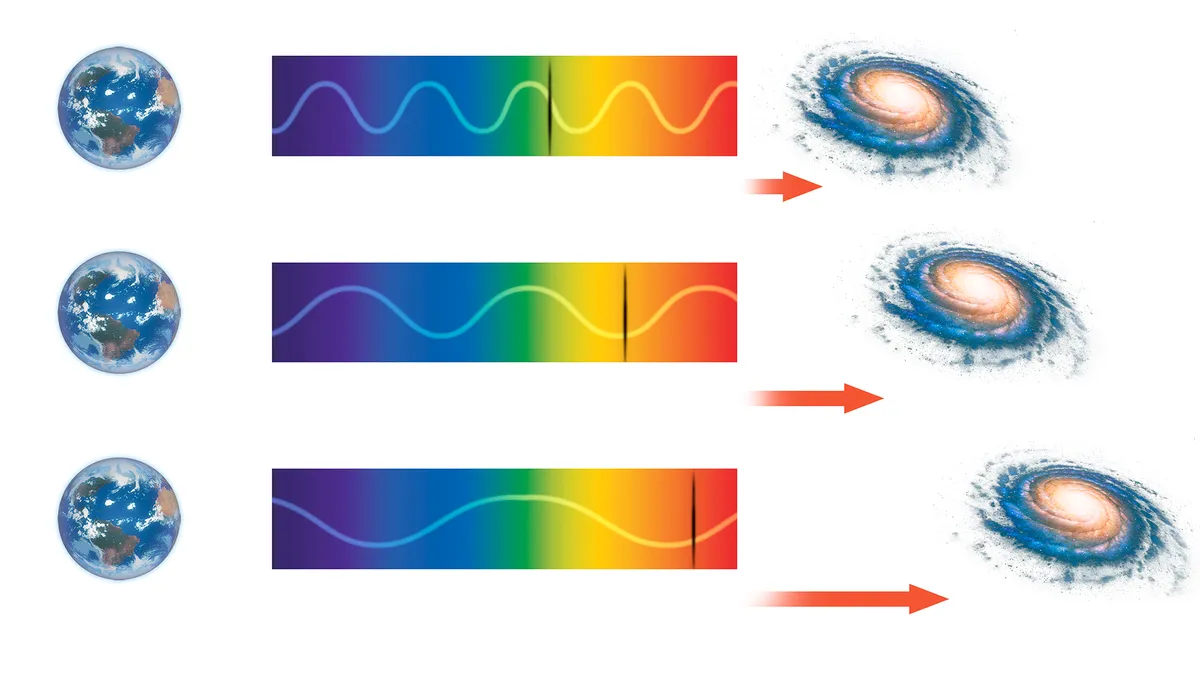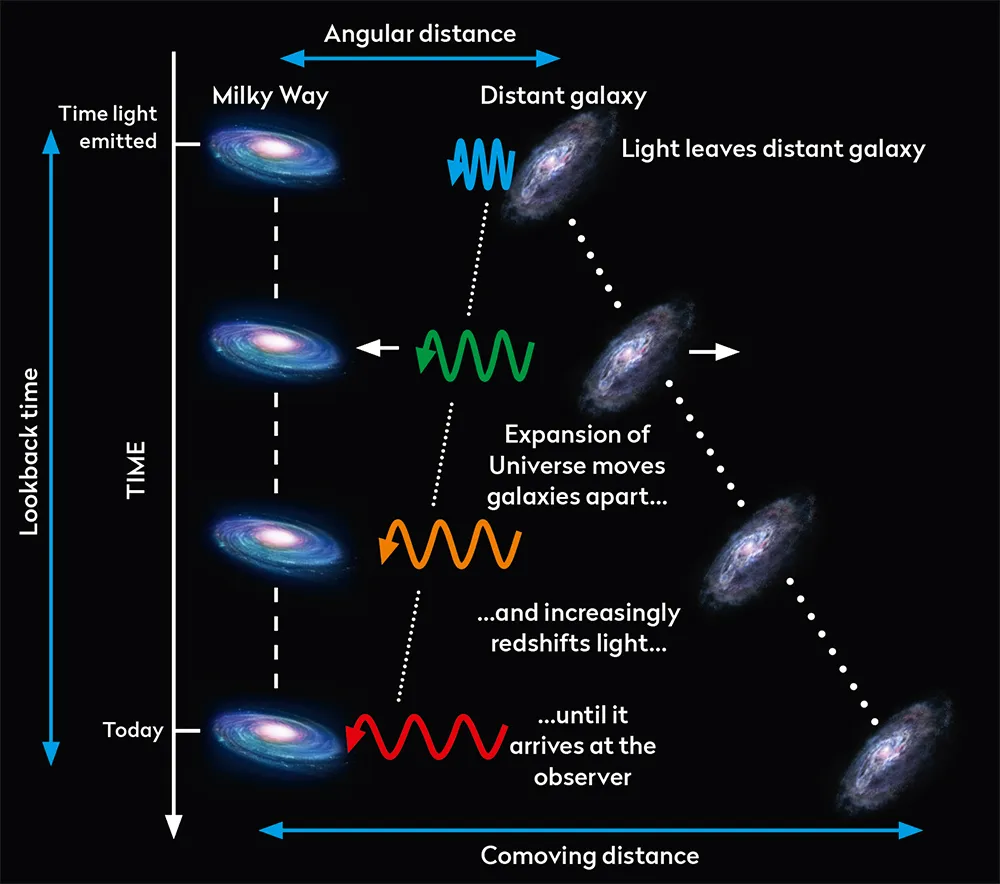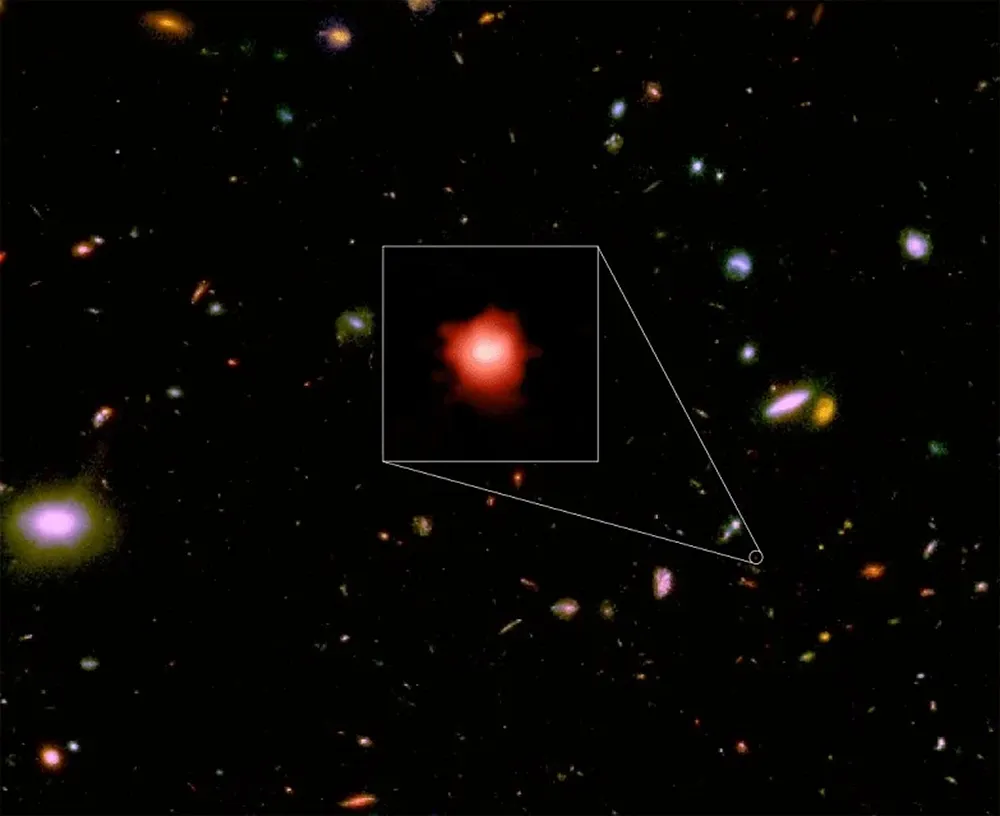If you know that the Universe is 13.8 billion years old, you may have often heard of objects discovered in space at a distance of lightyears greater than that value, and wondered how this can be.
How can the Universe be bigger in lightyears than its own age? Isn't this a contradiction?
Weeks after NASA released the very first images from the James Webb Space Telescope (JWST), astronomers began reporting the discovery of extremely redshifted galaxies.
A high redshift means the light has been travelling through the expanding Universe, getting stretched along the way, for a very long time.
In other words: these galaxies are incredibly far away.
One galaxy, an almost indiscernible smudge of light labelled CEERS-93316, was reported to be a staggering 35 billion lightyears away.

At first, it may seem difficult to explain how the distance between our Milky Way and CEERS-93316 has grown to 35 billion lightyears, given the Universe has only been expanding for 13.8 billion years.
How can it be that the size of the Universe is bigger than its age?
As we learned in our article Does the Universe expand faster than light?, the expansion of empty space is not constrained at all by Albert Einstein’s fundamental velocity-of-light speed limit.
However, when it comes to objects in an ever-expanding Universe, the concept of distance becomes a bit murky, so we need to take a closer look at what we really mean by ‘distance’.
First, it’s important to realise that we cannot measure cosmic distances directly (at least not outside our Solar System).

For galaxies, redshift is the only proxy we have, and in truth it only actually tells us how long the galaxy’s light has been travelling through expanding space.
For instance, a galaxy at a redshift of 5 (its wavelengths are five times their original value) means the light has been travelling for 12.6 billion years.
This is called the light travel time, or the lookback time, as we are seeing the galaxy as it was 12.6 billion years ago.
Intuitively, you would assume that this particular galaxy is 12.6 billion lightyears away. But in reality the galaxy is much further away.
After emitting the light that we receive today, the expansion of space pushed the remote galaxy and our own ever further apart.
It turns out that the ‘true’ distance of our redshift-5 galaxy (often called the comoving distance) is currently almost 26 billion lightyears.

The exact value depends partly on how the Universe has been expanding through time, which we don’t know in detail – but in any case, a remote galaxy is always further away than its light travel time would suggest.
Surprisingly, despite being 26 billion lightyears distant, the galaxy still appears as a slightly extended object on the sky, with a particular (albeit small) angular size.
That’s because its perceived angular size was set at the time the galaxy’s light was emitted, 12.6 billion years ago.
Back then, it was much closer to our Milky Way.
For a redshift of 5, it emitted the light when it was 4.3 billion lightyears from our Galaxy – this is its angular size distance.
Because the expansion of space constantly moved the goalposts back, it nevertheless took 12.6 billion years for the light to reach us.
As if this isn’t confusing enough, there’s also a luminosity distance, which tells you how faint the galaxy appears.
Because of the expansion of space, which decreases both the energy and the arrival rate of photons, our remote galaxy looks much fainter than you would expect for its actual (comoving) distance of 26 billion lightyears.
In a non-expanding Universe, it would only be this faint if it were located at a distance of a whopping 155 billion lightyears!

Returning to the recently discovered galaxy CEERS-93316: the light has been travelling from this galaxy for 13.5 billion years.
If you could lay down a ruler today, you’d measure its comoving distance to be around 35 billion lightyears.
Because the Universe was much smaller when the galaxy emitted its light, its angular size distance is two billion lightyears.
Finally, the expansion of the Universe decreasing its brightness means its luminosity distance is 615 billion lightyears, giving it an incredibly low surface brightness.
It should be obvious now why it hadn’t been observed until JWST came along, and its discovery is an impressive tribute to the telescope's light-gathering power!
Telescopes act like time machines

Because of the finite speed of light, we see distant objects as they were when the light was emitted long ago, not as they are now.
To many people, this may seem to be a nuisance – astronomers will never be able to learn what remote galaxies look like right now.
However, to cosmologists it’s a wonderful gift of nature.
Thanks to the lookback time, they are able to study the early youth of the Universe.
All you need to do is to look very far away into space and you’re automatically looking far back in time.
Thus, the full 13.8-billion-year history of the Universe becomes accessible to scientific inquiry.
This guide originally appeared in the March 2023 issue of BBC Sky at Night Magazine.
